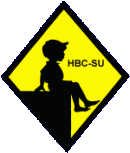
School Uniform: French School Smocks--Late 20th Century

Figure 1.--This French boy was photographed in his classroom during 1968. The boys wear matching blue front buttoning smocks. While the popuilarity of smocks declined in yhe 1960s, those boys that still wore smocks increasingly wore the front-buttoning style. Notice the ballpoint pen which fewer problems with ink stains.
|
Smocks began to decline markedly in popularity durinhg the late 1960s, especilly after the Paris student riots of 1968. The Paris student riots of 1968 succeded in bringing down the French Government of General DeGualle. Demands for educational reforms were one of the students main goals. Many of these reforms were not achieved, but regulations on student dress were soon relaxed all over France. The students involved in the riots were mostly university students, but the wave of reform soon spread down the educational ladder. Smocks became increasingly less common. HBC is not positive why smocks declined in popularity, but suspect it was because boys were increasinly were expressing their own opinions. Also as France was begoing increasingly prosperous, clothing was no longer such an important part of family budget. Thus smocks were no longer as importnt in protecting clothes. While the popuilarity of smocks declined in yhe 1960s, those boys that still wore smocks increasingly wore the front-buttoning style. In additionthe smocks were generallybshorter than they had been in the past. In addition, fewer boys were wearing short pants to school. Even the Catholic schools which had been requiring uniforms, began relaxing regulations. Smocks are now not commonly worn to school, except by very young children.
Paris Student Riots
Smocks began to decline markedly in popularity durinhg the late 1960s, especilly after the Paris student riots of 1968. The Paris student riots of 1968 succeded in bringing down the French Government of General DeGualle. Demands for educational reforms were one of the students main goals. Many of these reforms were not achieved, but regulations on student dress were soon relaxed all over France. The students involved in the riots were mostly university students, but the wave of reform soon spread down the educational ladder.
Popularity
Smocks became increasingly less common. HBC is not positive why smocks declined in popularity, but suspect it was because boys were increasinly were expressing their own opinions. Even the Catholic schools which had been requiring uniforms, began relaxing regulations. Smocks are now not commonly worn to school, except by very young children.
Utility
Also as France was begoing increasingly prosperous, clothing was no longer such an important part of family budget. Thus smocks were no longer as importnt in protecting clothes. One not inconsequential development was the ball point pen. The phasing out of ink and inkwells meant far fewer ink stains at school.
Styles
While the popuilarity of smocks declined in yhe 1960s, those boys that still wore smocks increasingly wore the front-buttoning style. In additionthe smocks were generally shorter than they had been in the past.
Other Clothes
Fewer boys were wearing short pants to school.
Decades
We notice the trends cincerning smocks in the late 20th century.
The 1970s
School smocks declined signifcantly in popularity during the 1970s, but they did not disappear. One HBC reader reports that his son wore one of the new smock styles in the early 1970s. A French reader tells us, "The school smock in the 1970s went out of fashion. At some schools the smocks was used as a protective garment in some classes like art and science. Some schools continued to use them as a kind of school uniform. This was mostly at private schools." Styles for smocks changed in the 1970s. A French reader tells us, "After 1970 the smock fashion was for a sort of very short smock called a tablier cardigan .
The 1980s
The 1990s
Smocks continue to be worn at some schools, primarily private schools. The smocks at these schools is often used as a school uniform.
HBC-SU

Navigate the Boys' Historical Clothing smock pages
[Return to the Main French school smock chronology page]
[Return to the Main French school smock page]
[Main smock page]
[Main school smock page]
Navigate the Boys' Historical Clothing French pages
[Return to the Main French page]
[French school uniforms]
[French royalty]
[French scouts]
[French choirs]
[French catalogs]
[French movies]
Related Style Pages in the Boys' Historical Web Site
[Smocks]
[Caps and berets]
[Long pants suits]
[Shortpants suits]
[Socks]
[Eton suits]
[Jacket and trousers]
[Blazer]
[School sandals]
Navigate the Boys' Historical Clothing Web Page
[Introduction]
[Activities]
[Bibliographies]
[Biographies]
[Chronology]
[Clothing styles]
[Countries]
[Contributions]
[FAQs]
[French glossary]
[Satellite sites]
[Boys'Clothing Home]
Created: October 26, 2001
Last updated: 4:22 PM 8/15/2005




